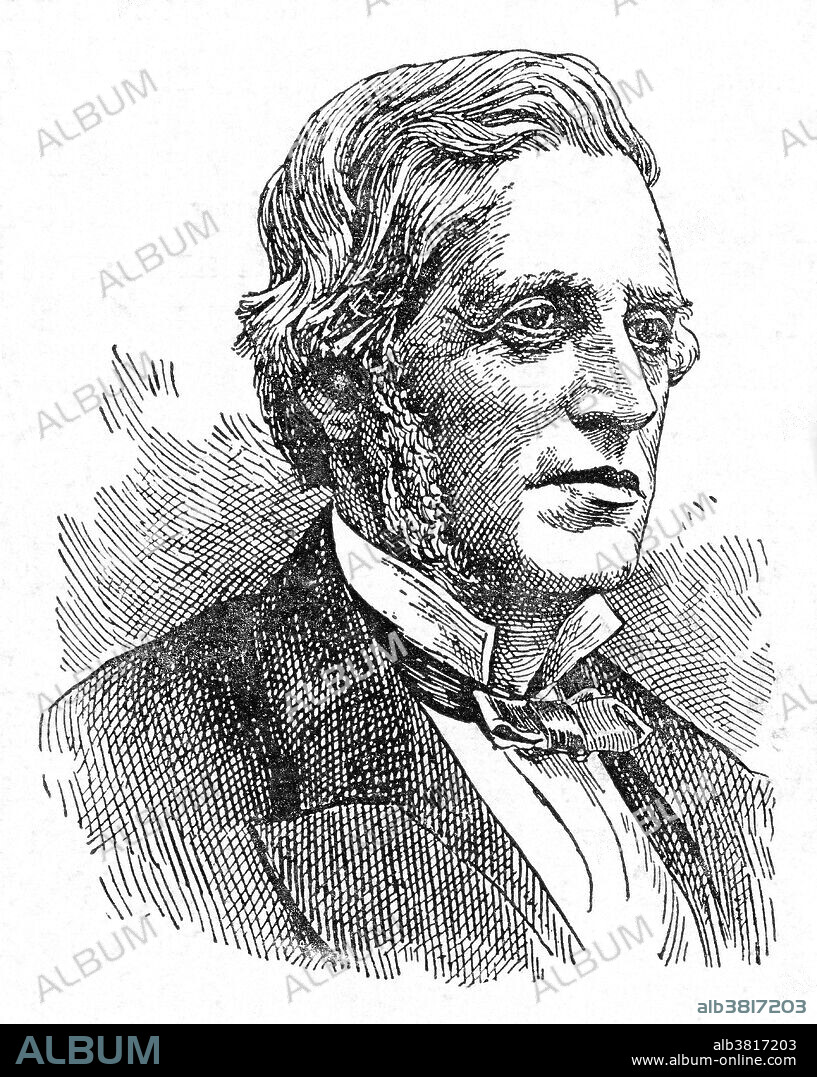alb3817203
William Bowman, English Anatomist and Histologist

|
Add to another lightbox |
|
Add to another lightbox |



Buy this image.
Select the use:

Title:
William Bowman, English Anatomist and Histologist
Caption:
William Bowman, 1st Baronet (1816-1892) was an English surgeon, histologist and anatomist. He is most famous for his research using microscopes to study various human organs, though during his lifetime he pursued a successful career as an ophthalmologist. His earliest notable work was on the structure of striated muscle, for which he was elected a Fellow of the Royal Society in 1841. At the young age of 25, he identified what then became known as the Bowman's capsule, a key component of the nephron. His collaboration with Robert Bentley Todd, a Professor of physiology, led to the publication of "Physiological Anatomy and Physiology of Man" (1843-1856) and "Cyclopaedia of Anatomy and Physiology" (1852), which detailed their research on microscopy and histology, relating minute anatomical observations to physiological functions. Their extensive use of the microscopes revolutionized the study of anatomy and physiology. n 1884, Queen Victoria created him as a baronet. He died at his house in 1892.
Category:
people • Historical & Fine Arts • Science: Personalities
Credit:
Album / Science Source / New York Public Library
Releases:
Image size:
3610 x 4525 px | 46.7 MB
Print size:
30.6 x 38.3 cm | 12.0 x 15.1 in (300 dpi)
Keywords:
1816 • 1841 • 1843-1856 • 1852 • 1884 • 1892 • 19TH CENTURY • 1ST BARONET • ANATOMICAL OBSERVATIONS • ANATOMIST • ANATOMY • ART • ARTWORK • AUTHOR • BARONET • BOWMAN'S CAPSULE • BOWMAN'S GLANDS • BOWMAN'S MEMBRANE • BOWMAN • BOWMANS CAPSULE • BOWMANS GLANDS • BOWMANS MEMBRANE • BW • CELEBRITIES • CELEBRITY • CO-AUTHOR • CO-WRITER • COLLABORATION • COLLABORATOR • CYCLOPAEDIA OF ANATOMY AND PHYSIOLOGY • DISCOVERER • DOCTOR • DRAWING • ECYCLOPAEDIA OF ANATOMY AND PHYSIOLOGY • ENGLISH • EUROPEA • EUROPEAN • EUROPEANS • EXPLORER • FAMOUS PEOPLE • FAMOUS • FELLOW • FIGURE • GROSS ANATOMY • HISTOLOGIST • HISTOLOGY • HISTORIC • HISTORICAL & FINE ARTS • HISTORICAL • HISTORY • ILLUSTRATION • ILLUSTRATIONS • ILUSTRATION • IMPORTANT • KEY COMPONENT • KNIGHTED • MALE • MAN • MEDICAL • MEDICINAL • MEDICO • MEN • MICROSCOPIST • MICROSCOPY • NEPHRON • NOTABLE • OPHTHALMOLOGIST • OPHTHALMOLOGY • PEOPLE • PERSON • PERSONALITIES • PERSONALITY • PHYSICIAN • PHYSIOLOGICAL ANATOMY AND PHYSIOLOGY OF MAN • PHYSIOLOGICAL FUNCTIONS • PHYSIOLOGIE • PHYSIOLOGIST • PHYSIOLOGY • RESEARCH • RESEARCHER (MALE) • RESEARCHER • REVOLUTIONIZED • ROBERT BENTLEY TODD • ROYAL SOCIETY • SCIENCE • SCIENCE: PERSONALITIES • SIR • STRIATED MUSCLE • USING MICROSCOPES • W. BOWMAN • WELL-KNOWN • WILLIAM BOWMAN • WRITER


 Pinterest
Pinterest Twitter
Twitter Facebook
Facebook Copy link
Copy link Email
Email
